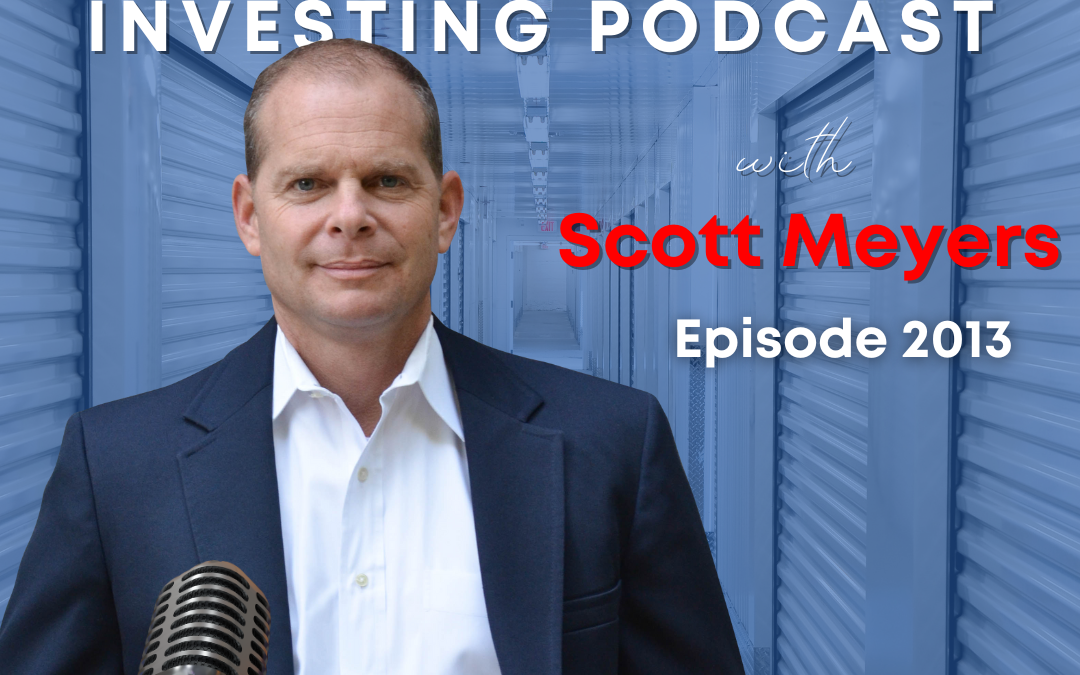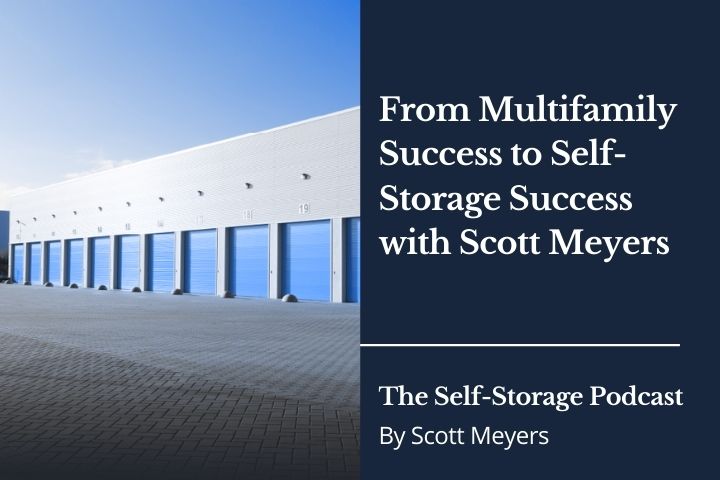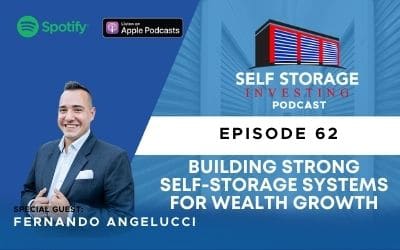Is Your Leadership Holding You Back? Here’s How to Fix It.
Scott dives deep into what it truly means to lead effectively, fresh from an insightful mastermind session, he shares powerful takeaways on self-awareness, vision-casting, decision-making, and resilience.
Scott uncovers how to refine your leadership style, build a culture of purpose, and create a team that drives success.
He also explores the importance of financial literacy, hiring for cultural alignment, and knowing when to pivot.
If you’ve ever questioned your role as a leader or struggled with delegation, vision-setting, or strategic decision-making, this episode is for you!
WHAT TO LISTEN FOR
3:23 – Defining Your Leadership Style vs. Becoming Self-Aware
13:51 – A Business That Changes the World: Why Purpose Matters
16:11 – Building Resilience as a Leader
21:22 – Hiring the Right People: Culture First, Skills Second
Leave a positive rating for this podcast with one click
CONNECT WITH US
Website | You Tube | Facebook | X | LinkedIn | Instagram
Follow so you never miss a NEW episode! Leave us an honest rating and review on Apple or Spotify.
Episode Transcript
Announcer (00:03):
This is the Self Storage Podcast with the original Self storage expert, Scott Meyers.
Scott Meyers (00:10):
Hello everyone and welcome back to the Self Storage Podcast. I’m your host at Scott Meyers and in today’s episode what I wanted to focus on is leadership. We just had a long discussion at our mastermind, our recent mastermind about what it means to be a leader in your organization, and that means a lot of different things, and that is a long topic and a very deep conversation, which is exactly what we had, which well, it went into the evening as well after dinner and also over bourbon and cigars out back of our hotel. And so I took some notes from this that I thought were just well too good not to share. And we’ve got some absolute rock stars within our mastermind. And the approaches were inspiring to some even what I would consider the best leaders in the group were taking notes of from others.
(00:58):
And at the end of the day, there is no one best way to lead because there is no one organization that is exactly the same and there’s no one group of or leadership team or staff members that you lead is exactly the same. And so as a leader, you need to show up differently in your organization depending upon your organization. And also sometimes that’s a per situation and depends upon the day and what conversations you’re having and what level of a leadership and what style of leader has to show up that day for the task at hand, whether it be a challenge or for celebration or all of the above. John Maxwell says that everything rises and falls on leadership. And Craig Rochelle’s podcast is dedicated to growing better leaders because as he says at the end of every single one of his shows is that as the leader gets better, so does the organization.
(01:44):
So for whatever cliche or saying you’ve heard about leadership, all of those are true because it is an important piece because everything starts with the leader, the mindset, the discipline, strategic clarity of an organization, it all starts with the leader. So what are you in the organization? Who are you in the organization? Some of the folks within our mastermind were talking about the fact that they really didn’t view themselves as a leader and that their organization was really flat and that they had lieutenants that maybe carried out some tasks, but they really didn’t look at themselves as the general, and there’s others in which it was more of as we pointed out and called them out. It was more of a dictatorial type of a situation in which people were just carrying out tasks and there wasn’t a whole lot of vision or buy-in or culture, however you want to look at it, your staff and you know what gets results.
(02:36):
And so there are many facets to leadership that I wanted to touch on, again, from our leadership style, meaning my leadership team as well as myself, and including those in the mastermind. So with that, let’s dive in. If you’ve listened to an audio book or read many or a lot of books on leadership, I think you’ll find that somewhere along the lines, usually in the beginning the authors will discuss how to define your leadership style. And that is always a little daunting to me because it sounds like you’re trying to manufacture something that really isn’t you. There are some folks that are born with leadership qualities. I wouldn’t say born leaders because there’s a lot of work that goes into that. And there’re just like you say, there’s no self-made man. You are the sum product of the people you spend time with and your upbringing and your experiences.
(03:23):
And so I don’t think that you can actually just define a leadership style or pick one off the shelf. I believe the first step towards becoming a great leader is becoming self-aware. I think that’s the greatest gift that you can give yourself is the greatest gift you can give your kids. And that is if you understand who you are, what makes you tick, and you show up sincere and genuine as the leader of the organization, then people are going to follow you because you are stepping into a role that is not necessarily a role, it’s just you are conjuring up the best in you that allows you to be the best leader that you can be. And as I say that, if there’s some anxiety welling up in you and you feel like, oh boy, this sounds like a long journey and I haven’t even taken these steps, and you know what?
(04:04):
The only thing I’ve been told or feel all my life is that I’m not a leader. I would say that before you give up on that, you may not have been given permission to be a leader, and that could also be a product of your environment and your background. If you grew up in a household, unfortunately, and I’ve seen this happen many times where you were allowed to speak and your opinion didn’t matter or you are chastised for giving your opinion because you always had an opinion. Well, you know what? Everybody has an opinion and it matters. And I have found through the years, especially even more so recently, that the times that I didn’t speak up were the times when things went awry. I finally gave myself permission and recognized that if I would’ve stepped into these situations and spoke up, but instead I was worried about what he was going to think or what she was going to say or that the one time I did in a situation like this with this group, it didn’t work out or my leadership team, or you feel like you need to always show up with all of the answers, well that’s the wrong answer.
(05:03):
Because we make mistakes and we’ve had failures. Those of us that are leaders, it doesn’t mean that we are a failure. It just means that we were bold enough to go out there and do what we thought was right for the betterment of the organization. And once you give yourself permission to do that and the freedom to do that, you’ll show up differently and your people will recognize that because what they’re looking for from you is for you to stand up and to be firm and that decisions will be made by you that tie back to the vision and tie back to your culture and tie back to the foundation of your company. And if you waiver or if you’re constantly looking to the leadership team and always saying, well, let’s all weigh in on this and make a decision, the leadership team continues to run around in circles.
(05:44):
No good decisions are being made because that is the lack of leadership. So you need to trust in yourself, your gut, the experiences that you’ve had, the decisions you’ve made, the reasons that you were placed in this role to begin with, and have that confidence and to understand that you were the one who’s driving the ship and that anxiety in your gut, as my password said, when you’re knower, what is the right move to make? What is the right decision to make in the moment and how to cast that vision. And so when you’re dreaming about the vision for the next year, feel confident in carrying it out and sharing that with your team and say, these are the non-negotiables. Here’s how we’re going to go about it. I’m not going to handle all of the details in this because that’s what I’ve hired you for, but this is the direction that we’re going to take.
(06:25):
Always looking for consensus from your staff and from your leadership team isn’t going to get you anywhere. And so what I’m saying is as I wrap up this point is if nobody’s given you permission to stand up to be a leader, I’m giving you permission right now. It’s time to draw a line in the sand to be bold, to take the experiences, the gifts that you’ve been given and to now deploy them in your organization. So we all know the most important role that you can step in as the leader is to cast the vision, to be the visionary. And for some folks it’s just like, well, that kind of sounds like you’re dreaming Scott, or just you would imagine a fairy tale of what this is going to be like and the vision of what you hope it would be or think it could be if all the stars aligned.
(07:08):
Now, it’s not that it’s you were given a reason and perhaps it was a dream to own your own business or to grow and scale and build an organization, but that’s not far off. That’s not dreamland, that is not fairytale, that is, you wouldn’t have gone forward if that were the case. And so here you are, you have launched, you are a leader now. Now it’s time to cast the vision for the next year, the next six months, the next three years, the next five years. Dare I say it, if you look at many of the books or the platforms or the movements that look to a five and 10 year goals, I’m also going to give you permission to maybe step that back a little bit. I believe. And even though in self storage we’re a fairly static business, there’s not a whole lot of changes, drastic and dramatic changes that come down the pike and there’s not a whole lot of things that affect us in a dramatic way in the environment, the economic climate, it’s pretty much steady as she goes.
(08:04):
So we could cast a vision and make plans for five years ahead, but what I found is every time I make a five-year plan, either my business does take a different turn that I didn’t anticipate or in five years that my projections were really kind of off because there were a few things that changed and interest rates went down or we found ourselves in the middle of a recession that we didn’t expect or it was delayed and we thought we were in a different economic climate. So I’m giving you permission yet again. As you can see, the theme here is I’m giving you permission to be a leader that is also flexible. Another good trait, and that is you don’t have to have a five year plan. I think you would find if you looked back, you’re probably like myself and most leaders that those plans that you made five years ago, you’re not in the same place.
(08:46):
You’ve either blown past the limits that you put on yourself or things have changed or you have changed and you’ve pivoted. And so the time that you spent making those plans was maybe not for the best and also all that anxiety you felt because you didn’t reach those goals or because it doesn’t look like what you set out to do five years ago, it’s okay, that’s all right as long as you are continuing to do the things you need to do, which is keeping an eye on the marketplace, looking at customer trends, looking at the marketplace and also as you grow, your vision may change as to where you’re heading. Perhaps the goal was to create a large $50 million fund of buying nothing but value add self storage facilities. And then you find that you know what? There are greater opportunities in adaptive reuse and in doing conversion style products and you found yourself creating an entire portfolio that was in the southeast only to be hit with high insurance rates and now you’re going to be moving back to the Midwest or whatever that looks like.
(09:42):
Now you’re partnering with the GC that is in nothing but ground up and they’re coming to you because you know how to raise the capital and they’re bringing you into this partnership and now you’re doubling down in that direction. We need to be opportunistic, setting a vision, casting that vision, but then also being opportunistic and not putting yourself into a very rigid mold that has you going in one direction over the next five years and striving at that. And only that because you may look over an opportunity that was gift wrapped for you and made just for you. And for most of us that are raising private equity, that’s what our investors are looking for from us as well. Yes, this is a somewhat boring business model and that’s why many investors like it. But if you’re not opportunistic enough to see that there are trends in other areas in the marketplace where you can deploy your expertise and to go over there and make money and make money for your limited partners to come alongside of you, well then they may end up going with somebody else and taking their investible dollars and working with another experience at South George Syndicator and investor that is more of a visionary and sees a pile of money in that corner over there and then they’re going to go chase it.
(10:45):
So that needs to be you. It doesn’t mean that you go off without a plan and it isn’t without creating the strategy, but you already know how to do that and you have a team behind you that is going to deploy with excellence in the direction that you have pointed them with the vision you have now been given. And it’s one thing to cast a vision and to have a vision and to write it down, but it’s a completely different gear when you have to now communicate this to your staff, especially if there’s a pivot each and every year. Your staff is looking to you for the guidance and for the vision and where we’re heading, but how that is delivered and to work with them as to how we’re going to achieve this. The way that that is delivered and the way you show up is equally as if not more important.
(11:34):
If they see your enthusiasm, they see your confidence and they feel as if this is a mission and this is a divine purpose that has been given to you, it has to have that type of gravity to it in order for people to be galvanized, to work together to help you to achieve it. And while you’re doing it, we had a long discussion about the reasons why we’re in business Now, let’s take a step back to you as the visionary. If you’re going to cast a vision that creates a culture and galvanizes the team around where you’re heading, it should have some type of a component that makes people better, that makes the world a better place and a reason why you’re doing this. I think just about everybody on this podcast understands and knows what our ultimate vision is. And that is we created a business so that we could raise our kids and not have to fit within the rigid schedule of the public school system.
(12:24):
And it’s a values impress upon our kids. We wanted to spend time with them. We had the freedom and the flexibility to travel with them, and we wanted to show them and teach them the world and we wanted to be on the mission field with them and take six weeks out of the year and unplug, go off the grid down to the remote parts of the Dominican and in Mexico and build houses and build community. And that’s what we were able to do. And that was the reason why we chose self storage or why self storage chose us quite honestly, so that we could do that because it is a flexible business model that allows us to be able to do that. And we tithe corporately, 10% of all of our profits in the business go towards building houses and making a dent in the world, changing the lives and the trajectory of family trees, one house at a time, one family at a time.
(13:08):
And our folks are galvanized around that. Other companies that will and have within our masterminds, some of these folks, they have this discussion as a team and they decide if you haven’t already picked in this case, my wife and I, we’ve kind of been led to this because of our experiences with youth with a mission and homes of hope. If you don’t have something that you are behind right now, something that you stand for or something that you can do out of your abundance that changes the world, then get your staff together. And this is a place where perhaps you do take a step back and you just foster an environment at which they are able to agree upon or somebody has been given a vision to them as to what you can do with your company out of its abundance to change the world.
(13:51):
And the team agrees upon it because there is nothing more powerful than seeing a team who has a purpose that is working with a purpose each and every day. Even if they don’t, they’re not 100% behind you on everything. They are part of something, they are part of a movement, they’re part of an organization that’s making a difference in the world, and they had a part in choosing and selecting what that was. And maybe for the one individual, this is the only place that they will ever work and they will make sure that the work environment is so good that they don’t have to go anywhere else and that the organization is so successful because this organization is going to be a direct contributor to and fund the mission that they have been given, the charity, the organization, the 5 0 1 C3 that they are most aligned with whatever that looks like for you.
(14:38):
If it isn’t something that is already a part of what you’re doing, get the team galvanized around it because that can be your culture. It’s a culture of giving. It’s a culture of life change. And for us in our education organization, we do have the ability to change lives there as well. And everybody is fired up behind that because the ripple effect, because when we have an opportunity, our team to help people become rich in self storage, and by the way, rich is not a bad word because you know what rich means? It means that you can write the big check to make the world a better place and to make change. And that only happens when we make people rich enough that they are able to do that. That now the ripple effect of what we do in our education organization, people get fired up when we allow people to achieve their dreams to live in abundance because they can write the check to change the world and the ways that they want to as well.
(15:21):
So all of this falls on that leadership at this level, choosing to use your business as a mission in some way, shape or form to be able to change the world. And so as we’re having these conversations with the leaders in our mastermind, fatigue began to sit in not because it was late in the evening because everybody was fired up, but there was kind of a fatigue that everybody recognized that they all needed to maybe step up a little bit more, but also recognizing that you have to show up in a lot of ways and you have to build a personal resilience as a leader because as a leader, even in your family, you have to be unwavering. It’s okay for your wife or your spouse and your kids to see that you get tired every once in a while and that maybe we’ll discuss this tomorrow or can I handle this at another time when I’m in a better head space?
(16:11):
But when it comes to your organization and people are coming to you to make decisions and they’re looking you to lead in a certain area and you’re faced with challenges, you have to build up some resilience and that is resilience to fatigue and that is resisting the temptation to just kick the can down the road and to not address this individual in your organization. That has become a cancer and that is affecting, it is affecting the way that everybody shows up to work. It is no longer ignoring the numbers and recognizing that there’s a corner of your business that is really in trouble, but I don’t know how to fix it and we don’t have the resources to fix it. I don’t have the time and neither does my staff and so we’ll let it ride. Things aren’t that bad and I’ll address that when it becomes worse and I’ve got bigger fish to fry.
(16:56):
No, you have to resist. The resilience also comes with resistance. And that means you need to resist giving in to the procrastination. That little voice in your ear that says It’s all right and just continue on or to ignore it or everything’s going to work out all right. And you need to tackle and you need to take on the big things and even the little things if their challenges before they become big things. Because as anybody knows something that starts out and is brought to your attention by your staff member, by a spouse, by a kiddo who states that you are not doing some of the things that you should be doing, it’s only going to get worse and you are going to be viewed worse. You’re going to be viewed in a different light by those that you are leading. If you don’t address it head on, if you’re always tired, if you’re not going to address it, then they’re not going to continue to bring these items to you and you won’t have an opportunity to be able to fix some of the challenges that pop up in your organization before they become big things.
(17:51):
And so it is important that you listen, you address them, and even if you can at the moment just say, okay, I am going to tackle this tomorrow afternoon, or can we set an appointment right now? I don’t have the ability to give it the time that it deserves. So understanding that you do need to manage the stress and the weight that some of the challenges come without leadership, but do it in a fashion that is no different than, and as they pile up during the day when people continue to bring things to you, it’s amazing that even if you can’t address them right now, but you set time to do them tomorrow, you look at it in a different light. It’s not as a big of an issue. You’ve maybe had a little bit of time to process this on your own during the evening or in the gym the next morning so that you come fresh and you may already have a solution to what you thought was a gigantic problem, which is a really simple solution.
(18:35):
So it’s okay, but you always need to circle back and you need to do it immediately. And to be able to draw on those experiences and have answers to those questions and those challenges means that you also need to continue to educate yourself on what is happening in the South Georgia industry. What is going on in the economy, what is happening with regards to monetary policy, fiscal policy, all of these things affect interest rates, cap rates and how we go about and approach the business. My meetings most of the day throughout the day are with folks that I gather information from. They’re folks that I’m doing business with, they’re folks that I’m looking to do business with, they’re customers and clients of ours, and I’m always gathering information and data and storing it in the back of my mind so that I can bring that out when a challenge comes up or an opportunity comes up and I can draw on that experiential knowledge to be able to make it quicker and better decisions, yes, we do need to go and sometimes and go to a coffee shop and hide in the corner and do the heavy lifting and do the hard work without any distractions around, but don’t make that a habit.
(19:36):
We can’t do that each and every day. You have to be involved in the industry and understand what is happening out there or you’re going to find, you may find, and maybe you have found this to be true in the past when you have been in a season where you’ve just had your head down working hard, but then all of a sudden when you pulled your head up, hey, the landscape looks a little different, things have changed a little bit. So you need to continue to engage and spend the time engaging with your staff, with others in the industry so you understand what is happening out there. And that is also where you pick up the best tips and strategies and can see and understand what is coming down the pike before others do as well. That is the whole reason why I built our mastermind, and that is after I got into the business and I was growing and scaling in an organization, I wanted to have a whole bunch of folks in the room with me, most of which had already grown and scaled a larger organization or were larger than I was in a place that I wanted to be that I could be able to lean on, but that also wanted to be in the same room with other folks that were either coming along or that we could also, we were at somewhat the same level to be able to feed information to each other and feed off of each other.
(20:39):
So if that is something that you’re interested in doing and looking at coaching community and deal flow and access to capital, if you’re not a part of our mastermind or if you’re looking to become a part of a mastermind, then I would invite you to come out because these are the conversations that we have and this is how we grow as leaders. So now I’d like to shift gears and talk about your team. How are you going to carry out your vision? And if you have this goal, if you have a vision of what your organization is going to look like that doesn’t happen on your shoulders, that happens by hiring key personnel, key staff members, key leaders in your organization that are going to lead other staff members that are aligned with your vision, your culture, and your values that are going to be able to carry this out.
(21:22):
And I think many folks, without going into an entire episode on how to hire, suffice it to say in the hiring process, you do need to hire based upon your morals and your values and the culture and that your organization is going to be built so that everyone as closely as possible can be in alignment. And that means that you are slow to hire, and that means that you do utilize culture index, predictive index, the DISC programs, any number of these personality background assessments to understand whether these folks are going to be a good fit within your organization. You’re also going to paint a picture of what it’s like to work there and not a flowery picture about how great it is, but here are the things that we stand for and here are the things that we won’t tolerate. Here’s our vision, here’s we understand when we arrive every day, this is what is expected and we’re working towards this goal.
(22:17):
And that should be what your true mission is and the purpose that you have as an organization and what you plan to do as an organization in the world, not just in self storage. And if they lean in and they get fired up about that and ask questions, then you’re on the right track. If they end the interview and they just nod their head, they ask no questions and they just ask if they’re right for the job and what is the pay and the benefits and how many days do they have off per year, then you know that they’re probably not the right person no matter what, let alone having alignment with your vision and your culture. And so all of this. And so none of this happens until you get the right people underneath you to be able to carry this out. And unfortunately, we all know that in the interview process, everybody does show up differently.
(23:07):
We show up better talking about our organization and who we are as leaders and the people that are working for us and they show up better showing what they can bring to the organization to be able to benefit and move forward. And it’s not till 90 days later till we really determine this, but you do need to take a longer look at in the hiring process as to how to bring folks in that are more in alignment with you as a leader and the vision that you have cast and the culture that you’ve created and the mission of the organization before you bring somebody in so that you don’t find yourself in a position 90 days later where you’re going backwards because now you have a vacancy again. And when they come on board, you cannot leave them wondering if everything that you’ve said in that meeting is truly played out because first of all, they’re going to forget as Pastor Rick Warren says, 80% of his sermon will be forgotten in 48 hours after he gives it.
(23:53):
And so they will have forgotten what you said in the interview until you continue to impress upon them as the rest of your staff can recite, what is your mission, what are your core values? What do you stand for? They need to see that and that you are feeding into them not just how to do this position, what is expected of them, and they’re fulfilling their job description and the roles and responsibilities, but they get a heavy dose of understanding and a reminder of your culture, the vision, the mission, and that can’t be talked about enough until everybody in your organization could recite it. If anybody ever asked them, what are the three things that you stand for? What are your core values and what is the mission of this organization and how is this organization different from others? How are you changing the world?
(24:34):
They should be able to answer that, but that only comes from you casting that vision and reminding them of it over and over again. You cannot do this too much, and that also means that it’s not so rigid that they have to follow everything that you say and the complete path you need to foster an environment in which they are open to share how they interpret your vision and how they can contribute in their own way and maybe a different way and some ideas and opportunities that they’ve seen, which still feeds into that mission and maybe helps us to get there faster. Or I see some things in the organization or some people in the organization that are holding us back and keeping us from achieving what is the ultimate goal and mission, or it’s just a glass ceiling in my position or my role that I think we could break through if you were open to listening to this and foster that environment as well.
(25:21):
That could be in a group format. It could be an open door policy you have in your organization. My staff knows that we are an open book and nothing matters except the success of the business, and we check our pride and our ego at the door and it stopped there. The only thing that matters is the success of the business because if we’re not successful, our success is somebody else’s miracle and they recognize and they realize that. And so it takes the pride and the ego out of every situation because if there’s something that’s an issue, it keeps us from building another house and changing another life, another family. And so that’s the way we approach this. And they need to feel and understand that the mission is much greater than any individual’s feelings on a topic. Doesn’t mean that you can come in all guns blazing and that you’re not sensitive and how you communicate and bring things across, but that also starts with you as well.
(26:08):
Don’t be the guy or gal that is the dictator and is a militant in style and that it is your way or the highway or that you get angry or that you yell. There’s nothing that gets accomplished that way. You may get fired up and people need to see you’re passionate about something but not anger and certainly not anger directed towards anyone that isn’t a one-to-one conversation and should never be done with anger. And on the flip side of that, a couple of our mastermind members on one in particular has a reward system that is absolutely incredible, and all rewards do is recognize people to make them feel valued. It shows that they’re doing things in the organization that are in alignment with our culture and our values. They get rewarded for that. Sure, there’s performance awards for hitting certain KPIs, key performance indicators and the goals that we set up.
(26:52):
Numbers matter. Every number has a name, every name has a story, and every story matters to us. That’s why we’re doing what we do. But when you reward the values and when people are doing things that are more in alignment with your core values and the vision and the mission, that’s when they get fired up when they exhibit that behavior and you reward them for that other people around to see, and they recognize that, oh, they can’t fake it because you just can’t. But when they exhibit that and they recognize when they show up doing that because it’s real easy not to, but you know what? It’s real easy to show up and to be able to support that. It doesn’t take any more effort than it does to suppress that. And so when they do and they’re rewarded for that, it’s amazing how it galvanizes everybody.
(27:33):
It gets everybody energized again to recognize and remember and reinforce the reason why we’re doing this and no coincidence. What happens behind this is that those that feel valued, those that get rewarded and are recognized for exhibiting the behaviors that are in alignment with our core values and our objectives, you’re grooming those folks to become leaders. If they’re not already in a leadership role in the organization, they’re going to become great leaders and those that recognize the value and see that they are being recognized based upon merit and how they show up, the ones that lean into that and look to do it more. Now, these are the folks that are your future leaders, if not already. And so this is self-serving, but in a positive way, the more opportunities and times that you see these folks show up as a leader, that’s the time to pounce and to reward them in great ways.
(28:30):
And now you’ve also made a mental note that when it is time and there is a vacant role are when that is being created in a certain area of the organization, you’re going to know which ones that show up well because they responded to your leadership and being recognized as being great leaders and exhibiting those values and those qualities. So those are the folks that you’re going to interview for that position. And the last piece that I wanted to touch on was one that was maybe surprising, but maybe not so surprising, and perhaps as more of the bourbon flowed that folks were being a little more candid about some of their blind spots and some of their shortcomings. And what came up many times was that the leaders, the CEO, felt like they needed to be A CFO as well. And it’s absolutely important to show up as the leader who understands the numbers, because the numbers are the scoreboard.
(29:21):
And if you don’t know how to read it, the scoreboard, you don’t know the score. And if you don’t know the score, you don’t know whether you’re winning or losing. And so the scoreboard, the dashboard is the financials, it’s the p and l, and it’s understanding cashflow, cashflow burn rate, it’s understanding receivables, it’s understanding your return on equity and your return on assets. And so all of the financial metrics and the KPIs that make a good organization regardless of the organization, we have our own KPIs and we have our own set of numbers and percentages that we operate from as a self storage organization that oversees multiple facilities. And so when we’re up here, the management company that is overseeing the portfolio, there are KPIs that the facilities themselves have to hit that we monitor and that one most people are familiar with. But what happens when you grow and scale as an organization, there’s a whole different layer of numbers and financials that you need to understand.
(30:16):
And this is where there’s many times either a glass ceiling where people can’t get beyond that or they just don’t realize what it takes. And so they’ll never grow beyond that because they just don’t know how to measure that or they’re truly failing at it. And before they can even get off the ground and get to facilities number three, four, or five and 10, they can’t grow their organization past two people, past three people. And one of those is themselves, and the other one is their executive assistant. And so again, this is what we do, and we show people, first of all, what an organization looks like. We dig into the p and ls and all of us share our p and ls. We’re all looking at the same KPIs for the most part, and growing our organization. Some organizations are a little bit different depending upon their focus and size dictates when you bring on a full-time CFO versus a fractional when you bring on multiple district managers.
(31:08):
And what levels does that look like and when do you outsource property management versus bringing it in? And what is the difference between asset management and having that on board versus outsourcing it? All of the things that go into those decisions rely upon the numbers. And if you don’t know the numbers, you can’t make decisions because the numbers are the boss. At the end of the day, the numbers are the boss, whether you think you are or not, you’re not because the numbers are. And so we had this discussion about how we all continue to get better, and once again, the fire burn solder when the coals are closer together. And so we all began to lean in and feed off of each other with regards to taking a deep dive into the financials that then not only ended our evening, but then that went into the next day.
(31:50):
And as we had deeper discussions, we changed up our agenda to make sure that everybody understood, Hey, what makes these businesses tick at this level and how do we get to the next level? And what were the lessons learned by some folks that are further on and larger organizations that they can speak into? The folks that are just now growing and scaling, they’re only on facility three or four. And so again, I am honored to be just the moderator to begin these conversations and to lean in and to share my experience over 20 years and the scar tissue that is built up over the years and the length that I have from the lessons learned to be able to pass it on. But then so some people can avoid those, but then that all of us can share those in an air about transparency in this community, this self storage community that is so giving of one another that is so open to sharing best business practices and not keeping everything close to the vest because it’s such a non-competitive environment.
(32:48):
So no matter where you’re at in the self storage business right now, if you’re just looking to get in, this is an incredible community. It’s an incredible industry to be able to do just that. It is a simple, predictable business model that if you carry it out with excellence and you lean into, as I say, simple, you lean into the thousand plus things that need to go into a successful company to make it a successful company, you will. The roadmap has been set. There are many folks that have gone before you. And so if this is something that is of interest to you, if you’re in the business already or looking to get into it, you need to get involved in a mastermind. We would love to have you become a part of ours because these are the conversations that we have. But no matter what, if anything that was said in this podcast, hopefully it made you better and you took notes.
(33:32):
But if there’s anything that made you uncomfortable and you need some assistance with, and well, we’re here for that. And if it’s not us, then you need to get a mentor. You need to get a partner or somebody at the end of the day that can uncover these blind spots. Because as we know in self storage, in commercial real estate and growing a business, these mistakes come with more commons and zeros behind them. If you’re flying blind and you don’t understand exactly what your blind spot is, or the bigger piece that we found is that if you don’t know the numbers, if you haven’t taken a deep dive or begun to educate yourself or that you wouldn’t even know what a CFO is providing to you, when they send you the report as to how you’re supposed to move forward, the next steps to take, then it’s time to get involved with a group or with somebody who can then teach that to you so that you can be all that you want to be.
(34:17):
Because once again, as the leader gets better, your organization gets better, and so does our industry. So with that, this is Scott Meyers. I am the Sherpa of the largest mastermind in the country in sell storage. Then we are ready to take you up the mountain and show you the way and show you the path. So I look forward to serving you again on the next episode where I believe that we’re going to continue this thread and we also have many, many special guests coming up. And as always, we invite you to come out to the Storage Mastermind, and that is@thestoragemastermind.com to learn more. So with that, everybody, have a fantastic day. Looking forward to seeing you all again on the next episode. Take care everyone.
Announcer (34:57):
Hey gang, wait three things before you leave. First, don’t forget to follow the Self Storage Podcast and turn on your notification so you never miss another episode. And while you’re there, please leave us a five star review if you like the show. Second, be sure to share your favorite episodes and more via Instagram, and don’t forget to tag us. And lastly, head to the links in the show description and hit follow on Twitter and Facebook to get a front row seat with the original Self storage expert, Scott Meyers.
















